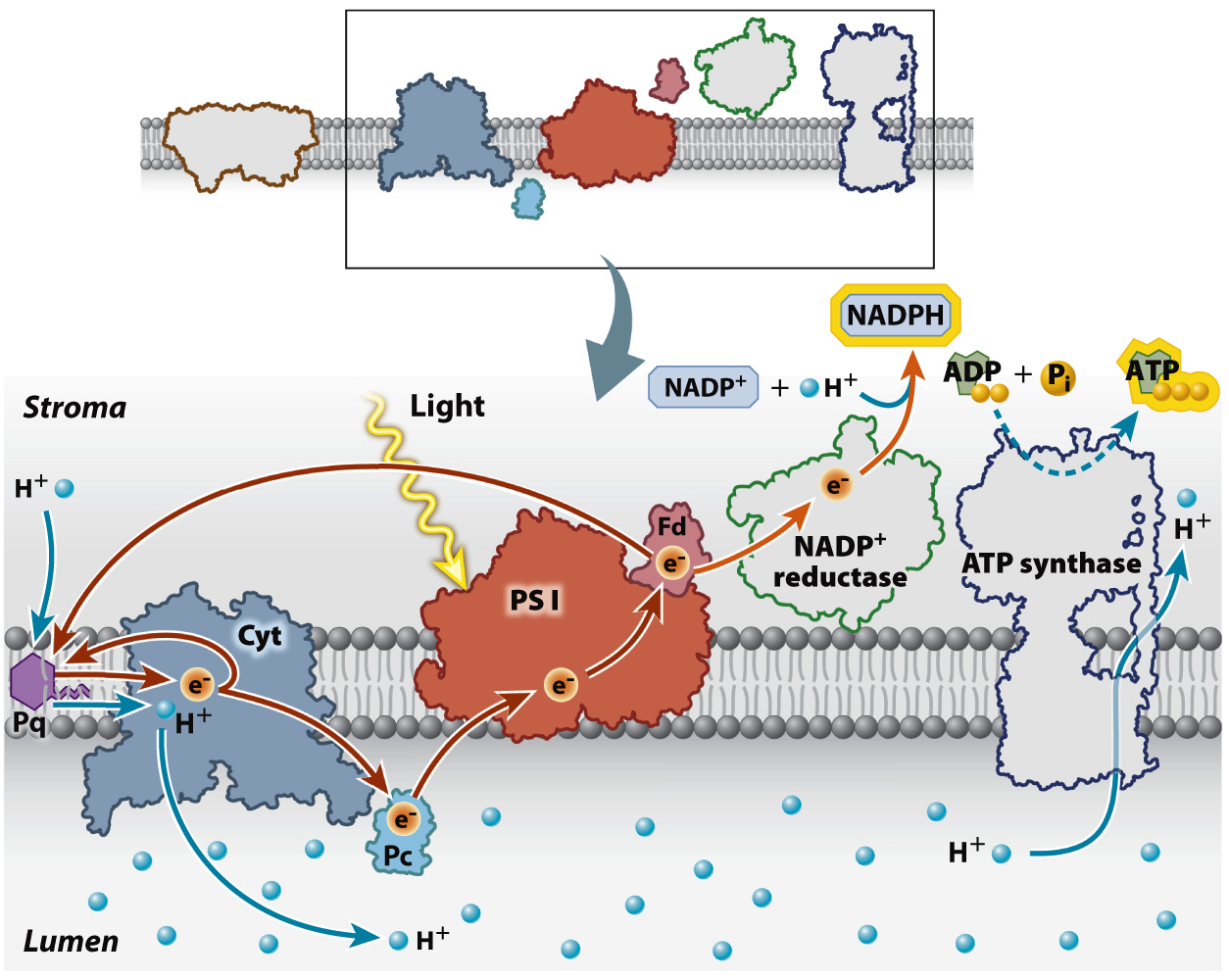Cyclic electron transport increases the production of ATP.
The Calvin cycle requires two molecules of NADPH and three molecules of ATP for each CO2 incorporated into carbohydrates. However, the transport of four electrons through the photosynthetic electron transport chain, needed to reduce two NADP+ molecules, does not transport enough protons into the lumen to produce the required three ATPs. An additional pathway for electrons is thus needed to increase the production of ATP.
In cyclic electron transport electrons from photosystem I are redirected from ferredoxin back into the electron transport chain (Fig. 8.15). These electrons reenter the photosynthetic electron transport chain by plastoquinone. Because these electrons eventually return to photosystem I, this alternative pathway is cyclic in contrast to the linear movement of electrons from water to NADPH.

How does cyclic electron transport lead to the production of ATP? As the electrons from ferredoxin are picked up by plastoquinone, additional protons are transported from the stroma to the lumen. As a result, there are more protons in the lumen that can be used to drive the synthesis of ATP.